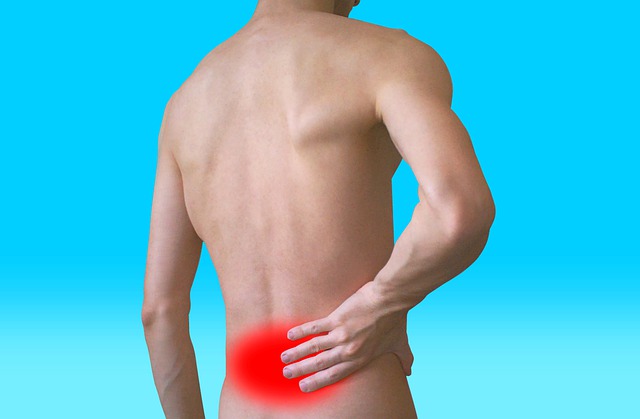It is very possible that on more than one occasion you have heard about the lumbar radiculopathy, although it must be taken into account that in order to understand what it consists of and how to deal with it, Some preliminary aspects must be taken into account..
To begin with, it is important to know that a nerve root It is the structure that is found as a transition element between the spinal cord and the peripheral nerves.. This root is made up of nerve fibers., which in turn divide to create the so-called peripheral nerves. These nerve roots supply nerve fibers to various nerves..
In most of the occasions in which it is assured that one suffers from a sciatica, what it really is is a radiculopathy in some root that supplies nerve fibers to the nerve. A nerve root contains both motor and sensory fibers., each of these roots being responsible for the movement of particular muscles, receiving information about the sensitivity of some areas of the body in particular.
Index
What is lumbar radiculopathy
A lumbar radiculopathy is an injury to one or more nerve roots in the lower back, there are different causes by which a root can become inflamed, as is the case of suffering a herniated disc, a canal stenosis or a tumor.
In those cases where a nerve root is compressed, there is an alteration of the microcirculation of the nerve fibers, which makes the cells unable to eliminate oxidized substances, and this causes an increase in inflammatory mediators. In most cases, root damage is caused by compression and inflammation..
Symptoms of lumbar radiculopathy
Depending on the root that has been affected, we can find some or other symptoms., as each root has motor and sensory functions. In this way, depending on which one is affected, particular muscles will be affected at the same time, causing sensitivity to be altered in certain areas of the leg.
Nevertheless, something that all radiculopathies have in common are the characteristics of the pain, since it is in all cases a neuropathic pain, which is characterized by its great intensity, with a burning sensation, in radiating pain. In this way, pain can be felt in areas far from where the injury occurs, which in this case occurs at the lumbar level and the pain is felt in the leg.
in addition, A feature to note about neuropathic pain is that the intensity of the pain is not proportional to the cause that originates it.
Types of radiculopathies
Depending on the nerve root that is affected, we can find the following problems:
Radiculopathy L1 and L2
Seen when L1 and L2 nerve roots are affected, which means that existe un deficit en la musculatura que flexiona la cadera. The area in which there would be sensory alterations would be the groin itself as well as the highest region of the thigh.
L3 radiculopathy
In this case it is characterized by showing pain in the inner thigh and groin, this being the area in which the affected sensitivity is found. There is weakness in being able to straighten the knee as well as in bringing the legs together.. What's more, In this radiculopathy, the absence of the patellar reflex stands out..
L4 radiculopathy
In this case the pain is localized to the inner aspect of the leg and the anterior aspect of the thigh, experiencing difficulties when proceeding to straighten the knee.
L5 radiculopathy
In this case the pain starts in the buttock, the back of the thigh and down the lateral aspect of the leg to the dorsum of the foot, ending in the big toe of the same. The weakness in this case is suffered when moving the ankle and being able to stretch the first of the toes.
S1 radiculopathy
This radiculopathy is characterized by pain that starts in the buttock, as well as the back of the thigh, the external aspect of the leg and foot by the area of the fifth toe. In this case there will be difficulty standing on tiptoe. when you suffer, Achilles reflex disappears.
When the L5 and S1 roots are affected, we speak of what is commonly called sciatica.
S2-S3 radiculopathy
In this case you suffer from pain in the back of the thigh, buttock and perineal region. This can be associated with alterations in sphincter control.
Treatment of lumbar radiculopathy
In general, when we talk about a lumbar radiculopathy we are facing a benign process that tends to evolve favorably. Nevertheless, The treatment depends on the cause, since it is not the same for a fracture as it is for a herniated disc or a tumor.
In the case of radiculopathy due to a herniated disc, a conservative initial treatment is recommended, based on the use of physical therapy treatments, anti-inflammatory, analgesics, TENS, neuromodulación… En un segundo paso se encontrarían aquellas técnicas que realiza la unidad del dolor como los blocks with anesthetic and corticosteroids O nerve root radiofrequency. If conservative treatment does not work, we should opt for surgical route.
In the case of a fracture, it is necessary to assess whether there is any type of bone fragment that compresses the root, and on many occasions it is necessary to perform surgery to release the compressed root and thus restore the shape of the vertebra.
The treatment of radiculopathies caused by tumors is more complex. It should be assessed if it is a metastasis or primary tumor, if curative surgery is possible or if the tumor is widespread and only symptom-control surgery can be used. In this type of patient, it is necessary to carry out an exhaustive analysis of the tumor to know the different treatment options to be carried out..
